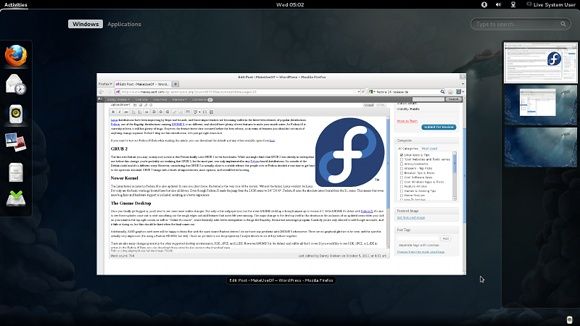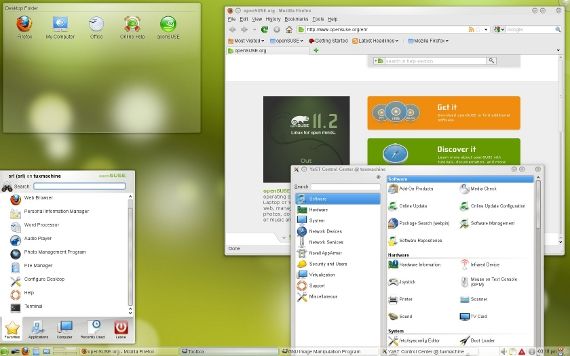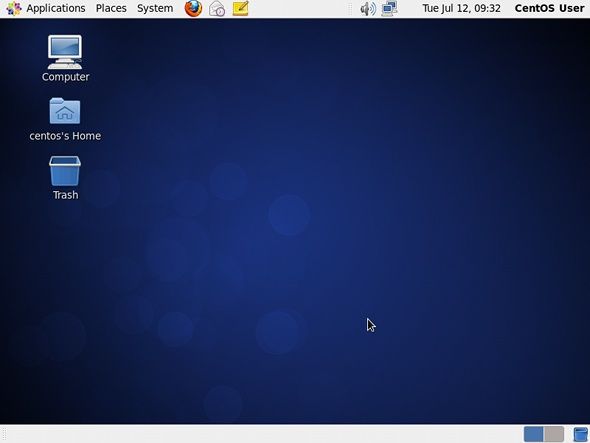Not too long ago I wrote a similar article about the top three distributions of the Debian side in the Linux family (Debian, Ubuntu, and Linux Mint), but as a true Linux geek I would never want to forget the entire other side of the Linux family, probably best known as the "RPM family".
All of these Linux distributions use .rpm files as installable packages rather than the .deb files which belong to the Debian family. So, let's get started!
Fedora
Fedora can be seen in many respects as the big mother of the RPM family, just as Debian is the big mother of the Debian family. This is in part because Fedora is made from scratch and isn't derived from another distribution, and a good number of distributions are based off Fedora (although not nearly as many that are based off of Debian). Fedora is almost entirely controlled by the community, sponsored and funded by Red Hat. Through personal experience, Fedora is probably one of the easiest distributions to join and get involved in.
Fedora is highly focused on providing only free software. This applies to literally everything. If some software or any piece of it doesn't have the right free license, either the software is completely removed from the repositories or the violating piece is removed.
For example, MP3 and similar codecs are nowhere to be found in Fedora's official repositories, so out of the box you can only play Ogg files. With the help of an additional repository, however, you can get those restricted codecs. Some people find this a pain to get a "working" system, but others appreciate the work Fedora puts towards free software and accepts that an additional repository is needed as a temporary workaround until the world is more accepting of open standards.
Fedora is made to be all-purpose and can be used perfectly on any system, but Fedora is better known for testing enterprise environments. Fedora is also highly cutting edge compared to other distributions that run on a regular release schedule, and the community prides itself on that. Despite Fedora being a cutting edge distribution, it is still surprisingly stable.
For more, see our comparison of Fedora and Ubuntu.
openSUSE
Enough about Fedora, next we have openSUSE. If people don't think about Fedora when they think of an RPM distribution, then they'll more than likely think about openSUSE. This green distribution isn't nearly as cutting edge and has longer development and release cycles. Therefore it is arguably among the most stable RPM distributions available, with a decent array of available software.
openSUSE is known for making an important change compared to other Linux distributions by using the KDE desktop as its default desktop environment rather than GNOME. openSUSE also includes a lot of free software, but they do not have a powerful focus on it as Fedora does. Note that although both Fedora and openSUSE use .rpm files for packages, if you find a package online meant for Fedora, it won't necessarily work in openSUSE, and vice versa.
CentOS
Last but not least, we have CentOS. CentOS is short for Community Enterprise OS. This distribution is actually made from Red Hat Enterprise Linux, which is a distribution that can only be bought via a support package. CentOS allows people to use RHEL without having to pay for the support package and with CentOS branding instead of RHEL branding.
CentOS is therefore binary compatible with RHEL out of the box, so any packages made for RHEL will work in CentOS. As the name suggests, CentOS is an enterprise distribution, and although RHEL is based off of Fedora, it's package selection is much reduced to "enterprise" software. Therefore, lots of desktop tools and games that regular desktop users might be accustomed to won't be available. On the good side, which Fedora's release cycle only lasts for 13 months, CentOS releases have support for at least 7 years. So, CentOS is highly advisable for servers.
We've compared CentOS and Ubuntu for use on a web server, if you're curious.
Conclusion
The world of distributions in the RPM family is quite interesting to explore, especially with so many distributions having a leg in enterprise affairs. Whether that means that the distributions are complicated or that they're more reliable than "regular" distributions, that is up to you. Either way, if you choose to go the RPM way rather than the Debian way, hopefully this article will help you figure out what each distro is all about.
What information did I miss out on? Which one do you like the most and why? Let us know in the comments!




